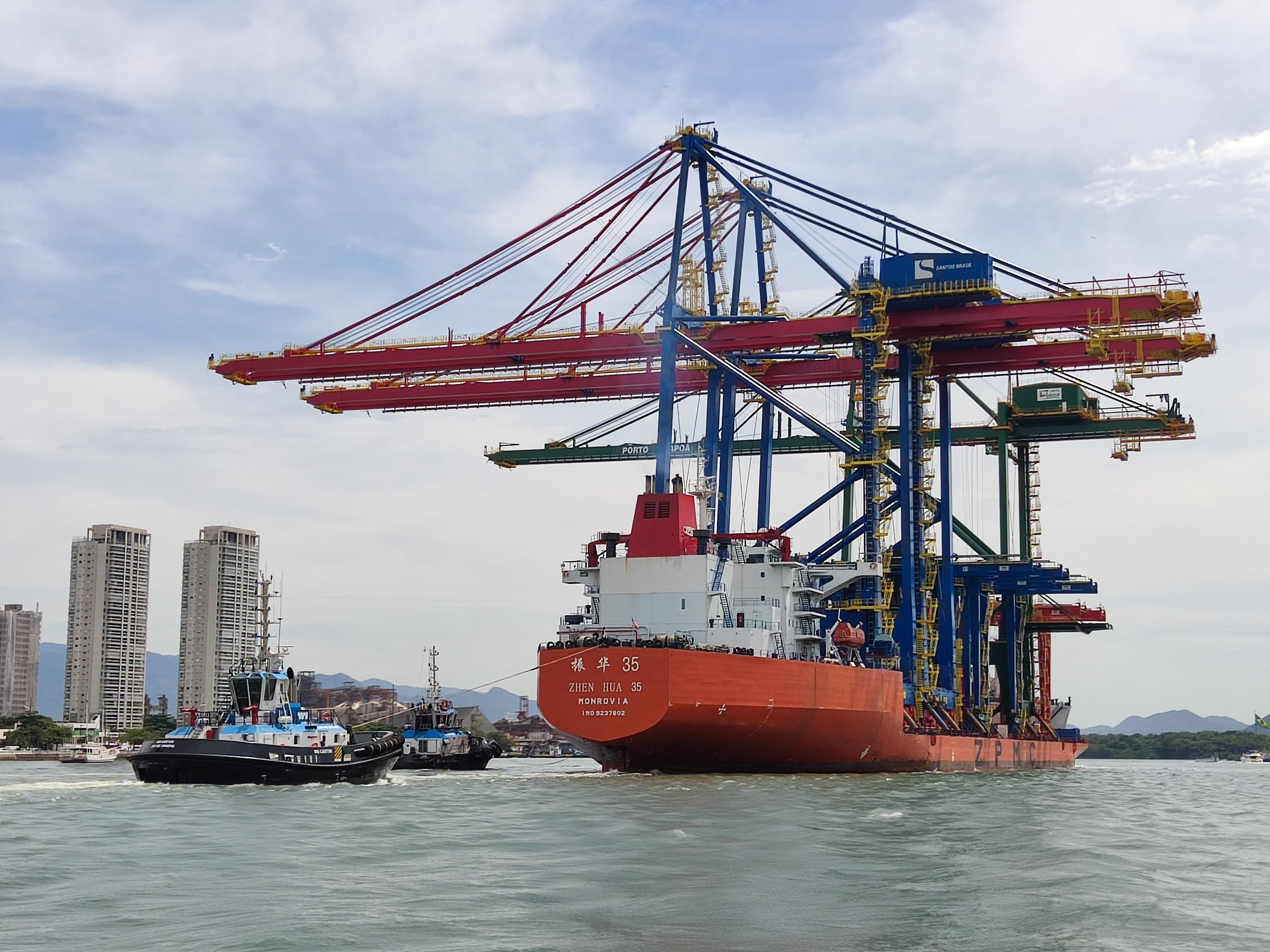Santos Brasil advances towards decarbonization with the arrival of ten electric cranes

Ship with eight e-RTGs and two portainers docked at Tecon Santos; equipment is part of the terminal expansion and modernization project involving investments of R$ 2.6 billion until 2031
The vessel Zhen Hua 35, coming from the port of Shanghai, China, docked on November 16, Thursday, at the port of Santos with two new portainers and eight e-RTGs acquired by Santos Brasil. These are state-of-the-art electrical equipment aligned with the concept of a low-carbon economy and the sustainability of the port activity growth.
The equipment is an important part of the several initiatives already being implemented by the Company to become carbon neutral by 2040. They also make up the project to expand and modernize Tecon Santos, one of the largest and most efficient container terminals in South America, which will receive investments of around R$ 2.6 billion (in updated values) by 2031 to increase its terminal capacity, current at 2.4 million TEUs (20-foot container equivalent unit) to 3 million TEUs.
Santos Brasil invested US$ 45 million in these cranes (US$ 22 million in e-RTGs and US$ 23 million in portainers), which crossed the ocean already assembled on the vessel. Further R$ 40 million will be invested in electrical and civil infrastructure works to adapt the terminal yard to the new equipment.
The eight e-RTGs add to the other 39 diesel RTGs currently in operation. With the two new portainers, the terminal's fleet of portainers will increase to 13 (ten ZPMC brand and 3 IMPSA) – all electric.
The Company's plan is to acquire two other ZPMC portainers and carry out the gradual replacement of the current RTGs, which are powered by diesel, with electrical equipment over the next few years.
Replacing a traditional RTG with an electric model allows a reduction of around 21 tons of CO2/month of GHG (greenhouse gas) emissions. Full electrification of RTGs will lead to a 97% reduction in GHG emissions from such equipment at the terminal. There will be less 713 tons of CO2/month released into the atmosphere, thus generating a huge environmental gain. The increase in energy consumption at Tecon Santos will be offset through the purchase of renewable energy (I-REC).
e-RTGs also bring an important change to the operation, which is the possibility of being conducted remotely, thus allowing greater comfort and safety for the operator, who will be able to control the equipment from within a modern operations center.
For Antonio Carlos Sepúlveda, CEO of Santos Brasil, the switch from diesel to electricity is fundamental in the Company's decarbonization process, which explains why the arrival of such new equipment is a milestone. "We are starting an important movement towards the sustainable growth of the port, increasing Tecon Santos capacity without significant impacts on the environment. Society, the industry and the Company win," he says.
The operation to remove the equipment from the vessel should take around eight days and involves the manufacturer's engineers, in addition to Santos Brasil's maintenance, occupational safety, information technology, operations and infrastructure teams. The equipment is expected to come into operation in the first quarter of 2024.
Equipment
The two portainers received were manufactured by the Chinese company ZPMC. They are electric, 50 meters high from pier to boom, and have a boom length of 70 meters, being able to handle up to two full 20-foot containers at the same time and up to 100 tons of cargo. Like the last two portainers received in 2020, the new equipment has TPS (Truck Position System) technology, which accurately defines where vehicles stop for loading and unloading movements.
The E-RTGS are also from the ZPMC brand. They are electric, with a capacity of 41 tons and seven ballast containers, 6+1 high, and with a lifting height of 21.2 m.
